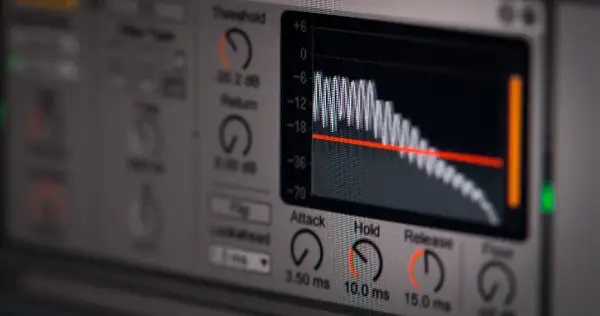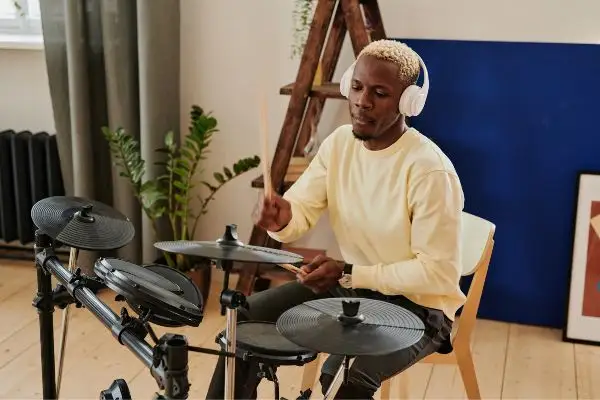The drums are the heartbeat of a song. It's no wonder then, that mixing engineers focus so much of their time on perfecting the mix. Mixing drums is undoubtedly one of the most important parts of the process for any beatmaker.
But how do you get started? How do you know which drum sound should be highlighted and which can hold its own in the back of the mix? Below, we'll teach you exactly how to mix drums so that your drum tracks can shine in every track.
Why Is A Drum Mix So Important?
It's often regarded that drums, vocals, and basslines are the most critical components of a song. The reasoning? Each of these elements is inherently rhythmic and carries the momentum of a piece of music. Drums are often situated as the anchor of the track - if your drum sound isn't tight, it could derail an entire piece.
Mixing drums boils down to deciding the ratios of different drum parts in relation to one another. How do the kick and snare balance? Where are the drum hits situated within a song? All of these choices are executed in the mixing stage.
What Do I To Start Mixing Drums?

Before you start mixing drums, it's important that you have the right equipment. Make sure you're using studio monitors and headphones to get an accurate depiction of your mix as it currently stands.
Traditional user-facing headphones are often altered with boosted frequencies, so if you mix with them, you'll have an inaccurate depiction of your mix and may end up unintentionally overcompensating in one area.
Note that mixing drums is a subjective process. We'll provide the general framework below, but don't be afraid to take in input from colleagues and pick and choose what aligns best with your style as an engineer:
How To Mix Drums From Start To Finish
Ready to start mixing your drums? Here are the steps you should take to build a polished mix.
Prepare Your Mix
Before mixing your drums, it's important that you've labeled all of your tracks and separated by their character. Drums recorded with room mics or overhead mics might be separated from those recorded in isolated environments, for example. You should also create a drum buss so that you can easily process your drums in isolation and as one cohesive component.
If you don't have one already from the music production process, you should seek out a reference track for your drums. This way, you can A/B test against different mixing processes. Every move in your mix should be intentional.
Make sure each track is at a level that doesn't overcrowd the mix, gain staged properly to leave headroom for the mixing of your drum recordings.
Cutting Out Unnecessary Sounds
Before you think about the blend of your tracks, it's key to cut out unwanted drum bleed, harsh frequencies, or any other sounds that might be taking away from a perfect drum sound. Drum mics can easily pick up unnecessary frequencies, so on some sounds, you might want to use a high pass filter or EQ to cut out that unnecessary low end.
Every layer of processing you add to your drums will be reflected in the next stage of the process, so don't underestimate the importance of starting with a clean slate. Use your EQ and other sculpting tools to cut out excessive room tone, sound bleed, and any other imperfections you find across the frequency spectrum.
The Kick Drum
The kick drum almost serves as the director for the drums. This drum sound has a wide emphasis on low end frequencies and usually sets the tempo for the rest of the drum mix. In most cases, the kick drum is set in the center of your drum mix and will feel fairly prominent within the drum channel.
You likely won't place many effects beyond compression onto the kick drum, as excessive noise can spread low end rumble and cloud the rest of the mix. For a punchier sound, consider exploring sidechain compression against the bass of your mix.
Snare
The snare drum works closely with the kick drum, though it has a more mid to high range frequency space. Since the snare drum can be quite loud, the snare mic can have a tendency to pick up a lot of bleed- if you're mixing live drums, keep it clean as much as possible.
Snare drums naturally cut through the mix and usually can sit well with some reverb or other time-based processing, though make sure your drum set sounds natural when playing with these otherworldly effects. Use parallel compression to maintain some control over the original drum samples whilst blending the snare sound with your effects.
For a more forward sound, you can try boosting the snare drum fundamental frequency which usually resides around 200 Hz. Try not to boost or lower anything more than 3 DB. If you need to do so, it might be a sign that you need to go back and re-record some elements.
Hi Hats and Percs
Hi hats or any other percussive elements will act as the background of your drum mix, adding necessary ear candy to keep your listener engaged. Since these drum elements typically hold space around the higher end of the frequency spectrum, you have more room for more obvious processing like chamber reverb or plate reverb. You can also pan drums to switch from one ear to another. These elements are the icing on the cake for your drum mix.
Compression and Other Effects
Listen carefully to your mix - does it feel balanced? The final step of mixing drums is group processing. To make your drum mix feel cohesive against the backdrop of your full song, you'll want to apply compression to your drum bus. Play around with your compression settings until you hit the sweet spot compared to your reference mix. Your drum bus should hold all of the effects that you want to apply to all drum parts. Experiment with the mix knob and listen back until you find a level that works for you.
Effects like reverb, delay, and distortion typically should be worked on individual tracks. This is because the lower drum sounds like the kick can start to cloud the mix when put in a wider landscape. You want your drum mix to have a cohesive, controlled sound that mimics the attributes presented in your reference track.
Minding The Rest Of Your Mix
Once you've mixed your drums to perfection, it's time to start to bring in other instruments. You should make sure that your drums hit especially well with bass parts and vocals, as these are other fairly important parts of a mix. Note that you very well might have to go back in to adjust your drum sound or drum bus when taking the context into account.
This is to be expected! It's not uncommon for even the most experienced engineers to have several bounced mixes. Mixing is more or less a subjective process, so it may take some trial and error to achieve the sound you're searching for.
How To Mix Drums FAQ

Having trouble taming your drum sounds? Consider these frequently asked questions and answers to help expand your understanding as a producer:
How do you mix drums to a song?
To mix drums, first, you clean up the tracks, find a reference, level, and balance, and finally add effects to taste. There are a lot of nuances that go into the process itself, but this is a general outline most engineers will work through while mixing.
Where should drums be panned in a mix?
In most cases, your kick drum will be front and center in your mix. Other drum sounds like the snare, hi hats, or any other textures can be panned to taste. Panning can also be dynamic and change over the course of a mix.
Should you mix drums first?
Everyone approaches the mixing process differently, but it may make sense to start with mixing your drum kit early on. Many engineers agree that as long as your bass line, drums, and vocals work together, you can count on the song having an impact.
The way your drums sound can make or break a track. Mastering the art of mixing drums may not come easy, but it's an essential skill for any beatmaker over the course of their career. Hopefully, this guide makes it easier for you to bring out the best in your drums. Happy mixing!





